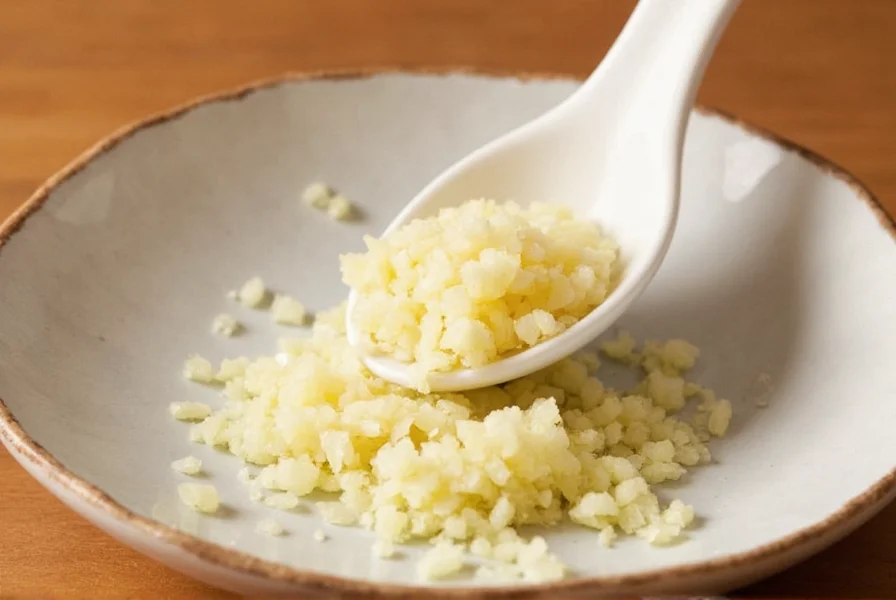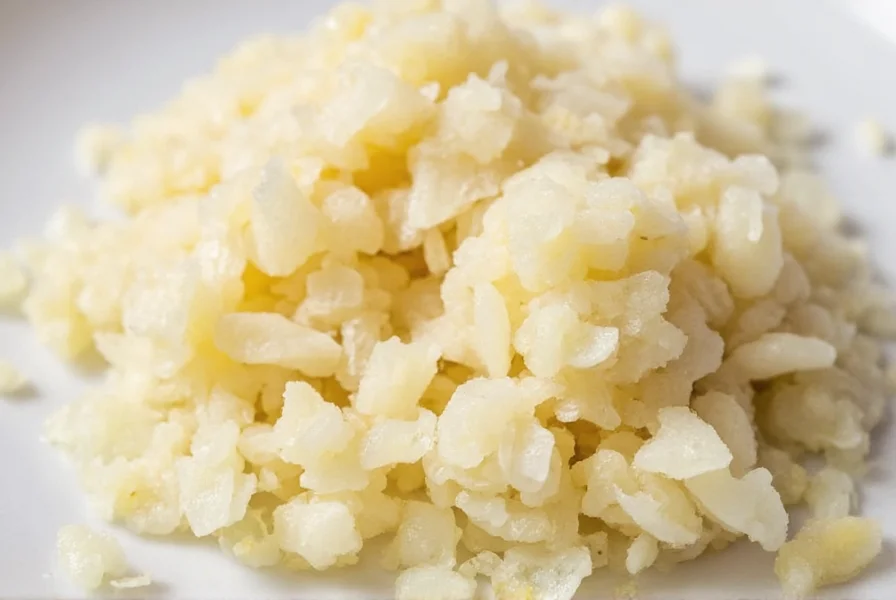Understanding garlic measurements is essential for achieving the perfect flavor balance in your cooking. While recipes often call for "1 clove" or "2 cloves" of garlic, many professional recipes and food manufacturers prefer volume measurements like teaspoons for consistency. This creates confusion for home cooks trying to convert between these measurement systems.
Why Garlic Measurement Conversions Matter
Garlic intensity varies dramatically based on quantity. Too little leaves dishes lacking depth, while too much creates overpowering bitterness. The precise conversion from whole cloves to minced garlic ensures your recipes turn out perfectly every time. This knowledge proves especially valuable when following international recipes or scaling dishes up or down.
Factors Affecting Garlic Measurements
Several variables influence how much minced garlic you'll get from a single clove:
- Clove size - Garlic cloves range from small (less than 1/2 inch) to jumbo (over 1 inch)
- Mincing technique - Finely minced versus roughly chopped affects volume
- Packing density - How tightly you pack the minced garlic into the measuring spoon
- Moisture content - Freshness impacts how much the garlic compresses
| Garlic Clove Size | Minced Garlic Yield | Teaspoon Equivalent |
|---|---|---|
| Small (1/2 inch) | Lightly packed | 1/4 tsp |
| Medium (3/4 inch) | Standard mince | 1/2 tsp |
| Large (1 inch) | Firmly packed | 3/4 tsp |
| Jumbo (1+ inches) | Compacted | 1 tsp |
Practical Measurement Tips for Home Cooks
When converting garlic measurements in your kitchen, consider these professional techniques:
For the most accurate results, use a kitchen scale. One medium garlic clove weighs approximately 3-7 grams before peeling, yielding about 2-5 grams of minced garlic. However, most home cooks prefer volume measurements for convenience.
When mincing garlic, press down gently on your measuring spoon to eliminate air pockets but avoid compacting the garlic excessively. For recipes requiring subtle garlic flavor, use the lower end of the measurement range. For bold garlic presence, opt for the higher end.

Substituting Garlic Forms in Recipes
Understanding garlic conversions extends beyond fresh cloves. Here's how different garlic forms compare:
- 1 fresh garlic clove = 1/2 tsp minced fresh garlic = 1/8 tsp garlic powder
- 1 teaspoon jarred minced garlic = 1.5 fresh cloves (due to added liquid)
- 1 teaspoon garlic paste = 1.25 fresh cloves
When substituting, remember that processed garlic products often contain preservatives and citric acid that slightly alter flavor profiles compared to fresh garlic. For the best results in delicate dishes, stick with freshly minced garlic.

Common Measurement Mistakes to Avoid
Many home cooks make these garlic measurement errors:
- Using heaping teaspoons instead of level measurements
- Not accounting for clove size variations
- Substituting garlic powder using a 1:1 ratio with fresh garlic
- Measuring whole cloves when a recipe specifies minced
Professional chefs recommend tasting as you go when working with garlic, especially when converting measurements. Garlic intensity varies by season and growing conditions, so flexibility proves more valuable than rigid adherence to measurements.
When Precision Matters Most
Certain dishes require exact garlic measurements for optimal results:
- Vinaigrettes and marinades - Too much garlic can overpower delicate oil-based dressings
- Pasta sauces - Garlic burns easily and becomes bitter when overused
- Garlic bread - Precise measurements prevent raw garlic chunks or burnt spots
- Cocktails and infused oils - Small measurement errors dramatically affect flavor
For these applications, using the standard 1 clove = 1/2 tsp minced garlic conversion provides the best starting point, with adjustments made to personal taste preferences.
Frequently Asked Questions
How many teaspoons of minced garlic equals two cloves?
Two medium garlic cloves yield approximately 1 teaspoon of minced garlic. For small cloves, use 3/4 teaspoon, and for large cloves, use 1 1/2 teaspoons to maintain proper flavor balance in your recipes.
Can I use garlic powder instead of fresh minced garlic?
Yes, substitute 1/8 teaspoon garlic powder for each medium garlic clove (or 1/2 teaspoon minced fresh garlic). Garlic powder has concentrated flavor, so use less than fresh garlic. Remember that powder lacks the fresh aroma and subtle complexity of freshly minced garlic.
Why does my minced garlic measurement seem less than expected?
Several factors reduce minced garlic volume: using small cloves, not packing the spoon firmly, or losing small pieces during mincing. For accurate measurements, use medium cloves and gently press the minced garlic into the teaspoon without excessive compaction.
How should I store leftover minced garlic?
Store leftover minced garlic in an airtight container with a thin layer of olive oil to prevent drying. Refrigerate for up to 1 week. For longer storage, freeze minced garlic in ice cube trays covered with oil, then transfer to freezer bags for up to 3 months. Never store plain minced garlic at room temperature due to botulism risk.
Does roasting garlic change the teaspoon measurement?
Roasting reduces garlic volume by about 25% due to moisture loss. One roasted medium clove yields approximately 3/8 teaspoon. For roasted garlic recipes, adjust measurements slightly downward or taste before adding additional garlic to maintain balanced flavor.










 浙公网安备
33010002000092号
浙公网安备
33010002000092号 浙B2-20120091-4
浙B2-20120091-4